Chopped Triangular Wave Pwm Quantizer
ZANBAGHI; RAMIN ; et al.
U.S. patent application number 16/163638 was filed with the patent office on 2020-04-16 for chopped triangular wave pwm quantizer. The applicant listed for this patent is Cirrus Logic International Semiconductor Ltd.. Invention is credited to KYEHYUNG LEE, JOHN L. MELANSON, ANURADHA PARSI, RAMIN ZANBAGHI.
| Application Number | 20200119725 16/163638 |
| Document ID | / |
| Family ID | 70159143 |
| Filed Date | 2020-04-16 |
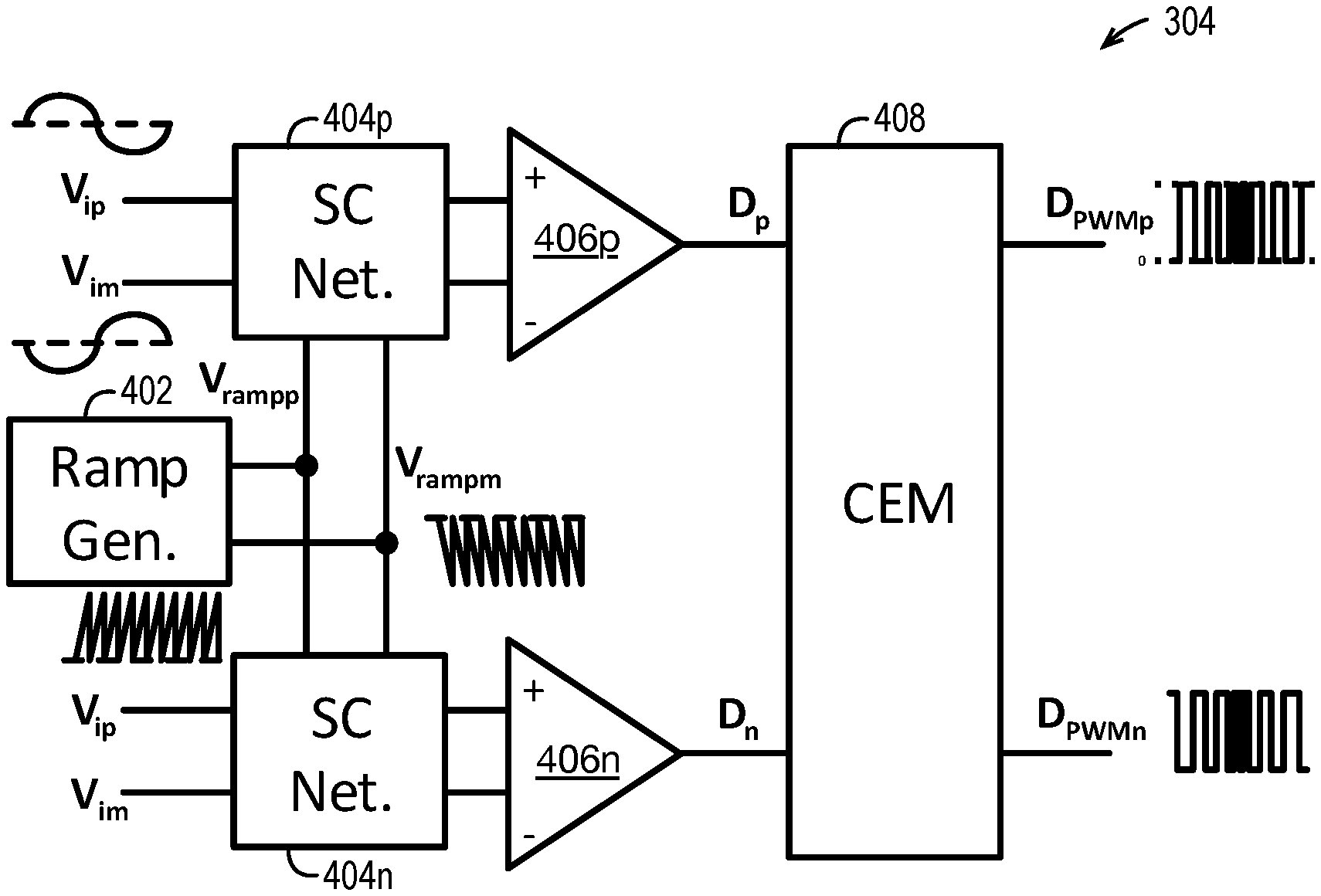
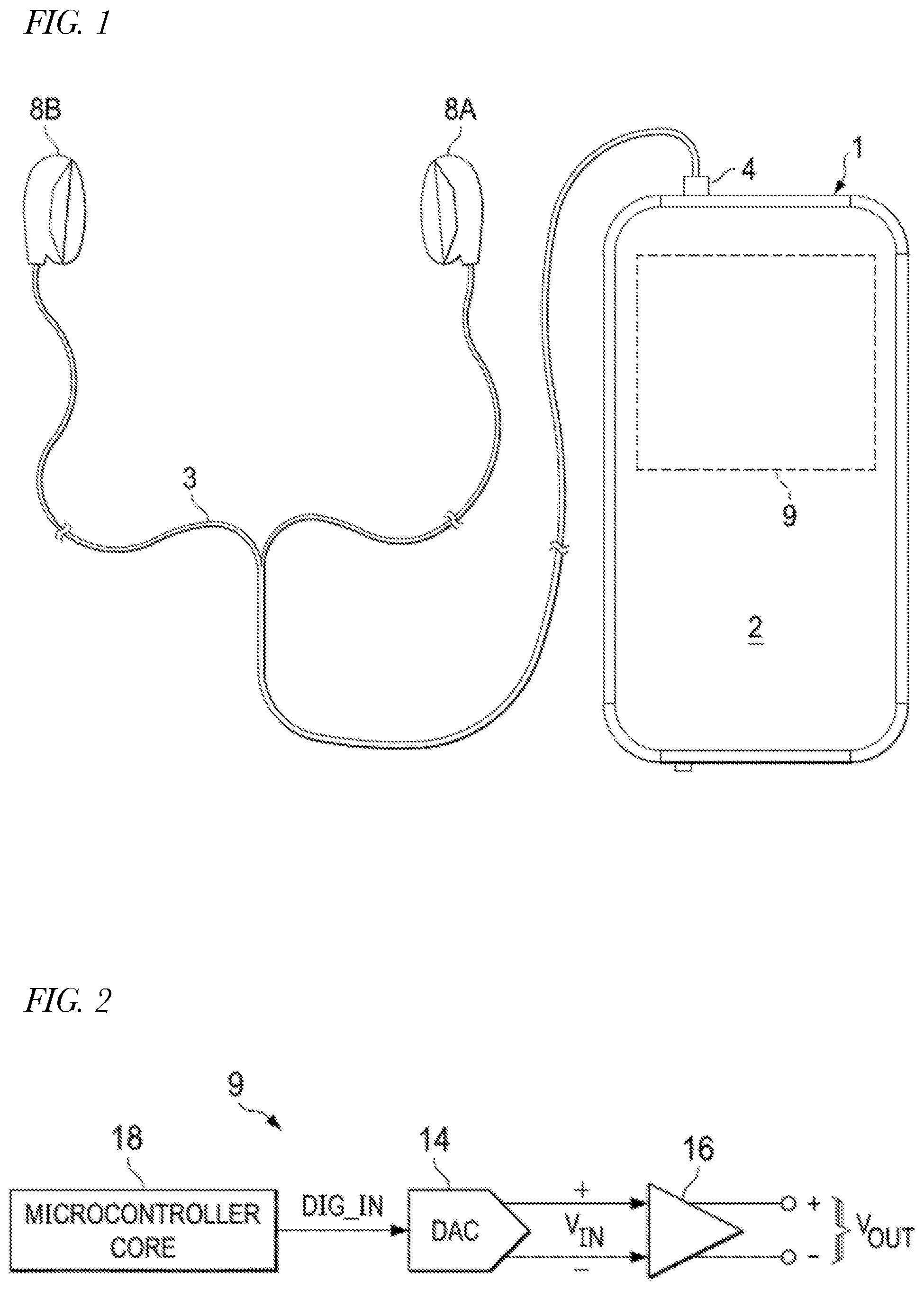

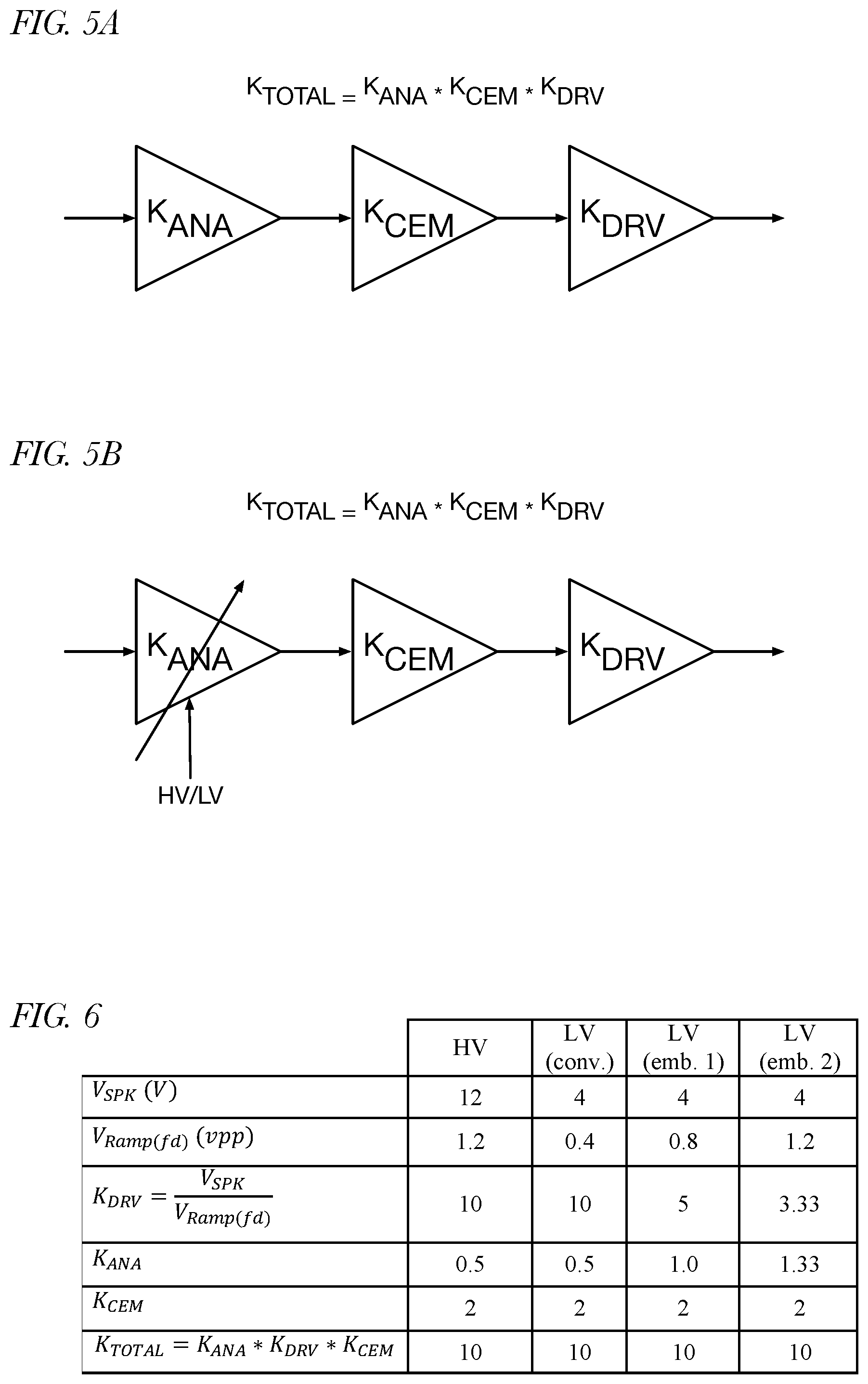

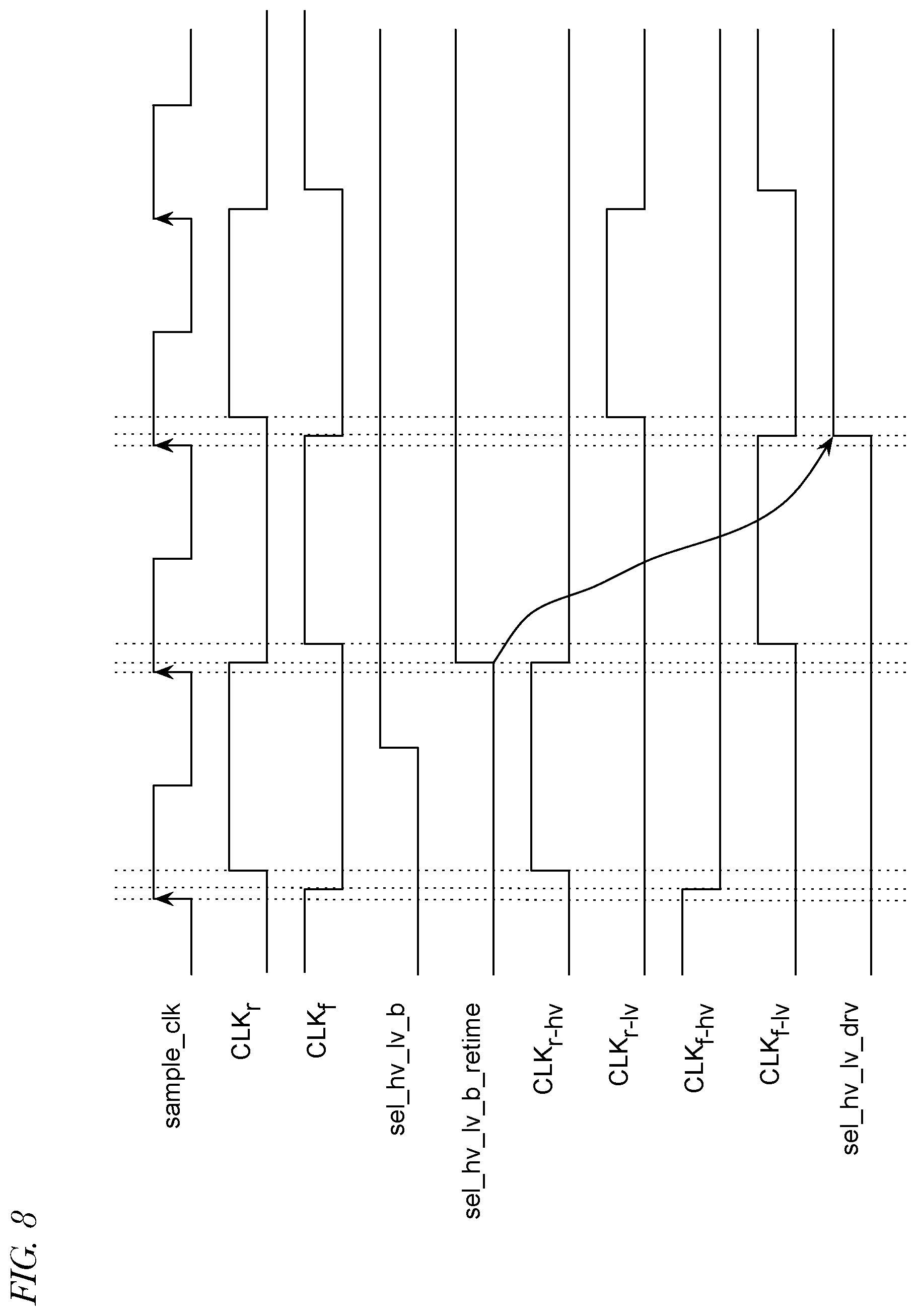
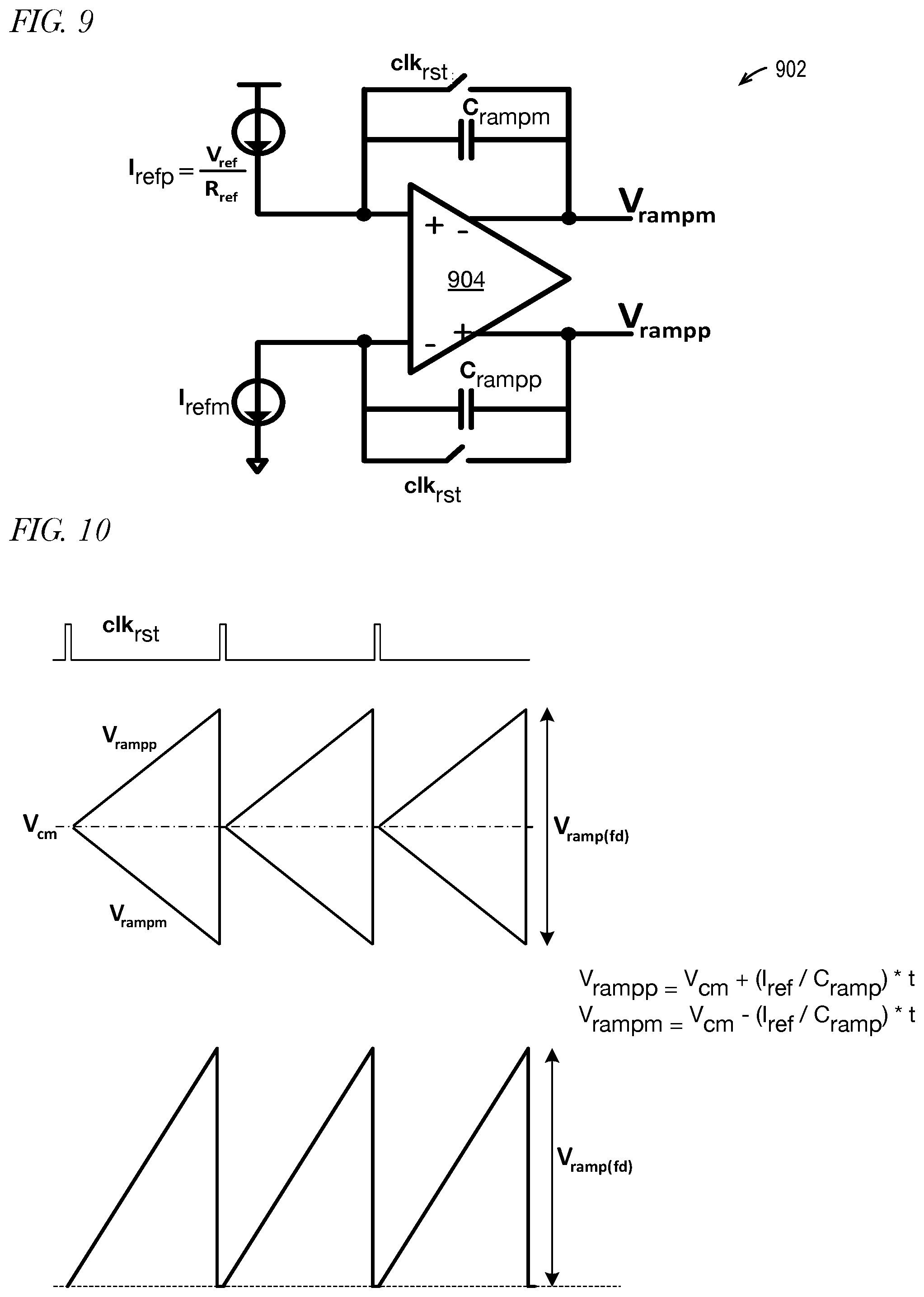
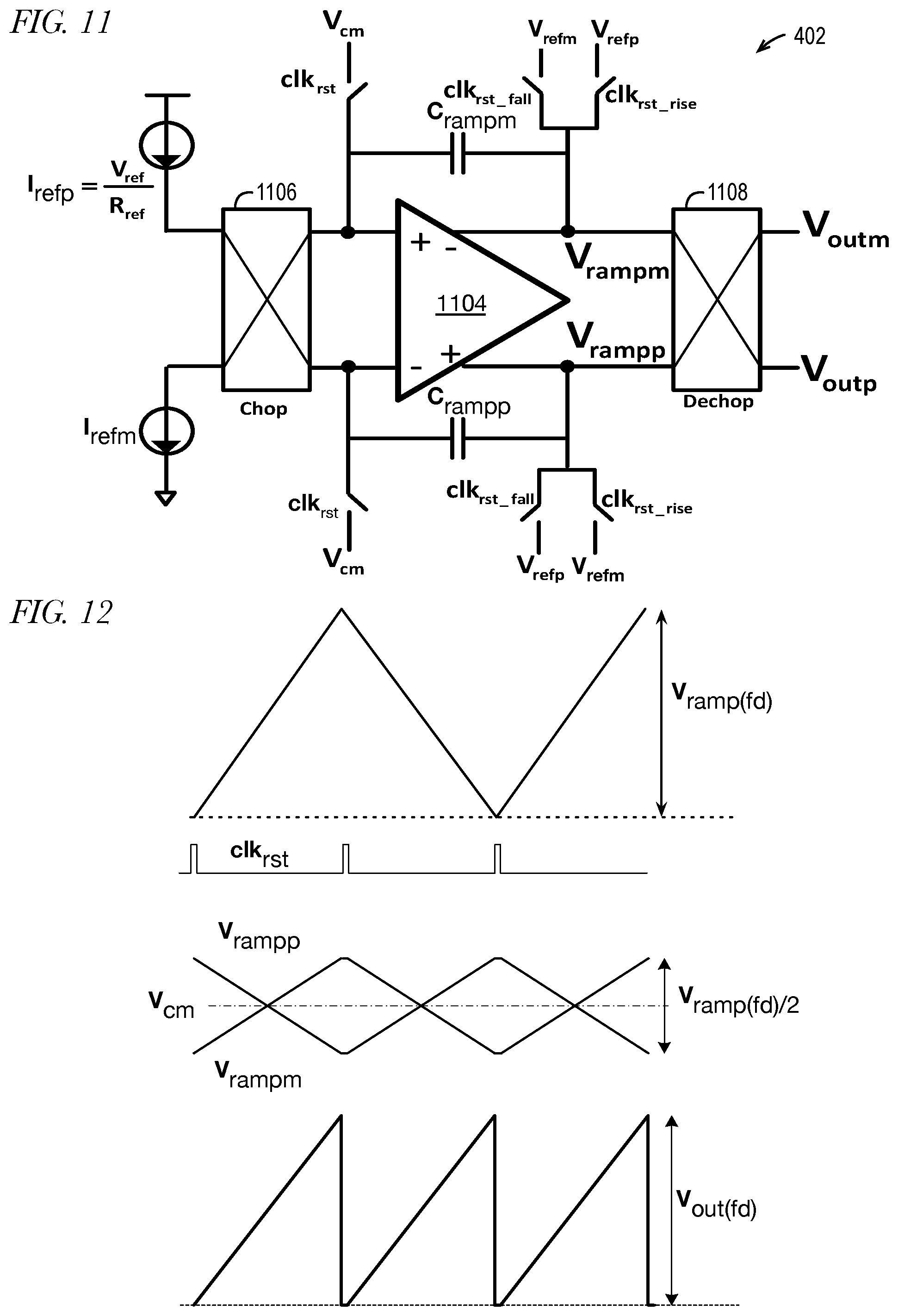
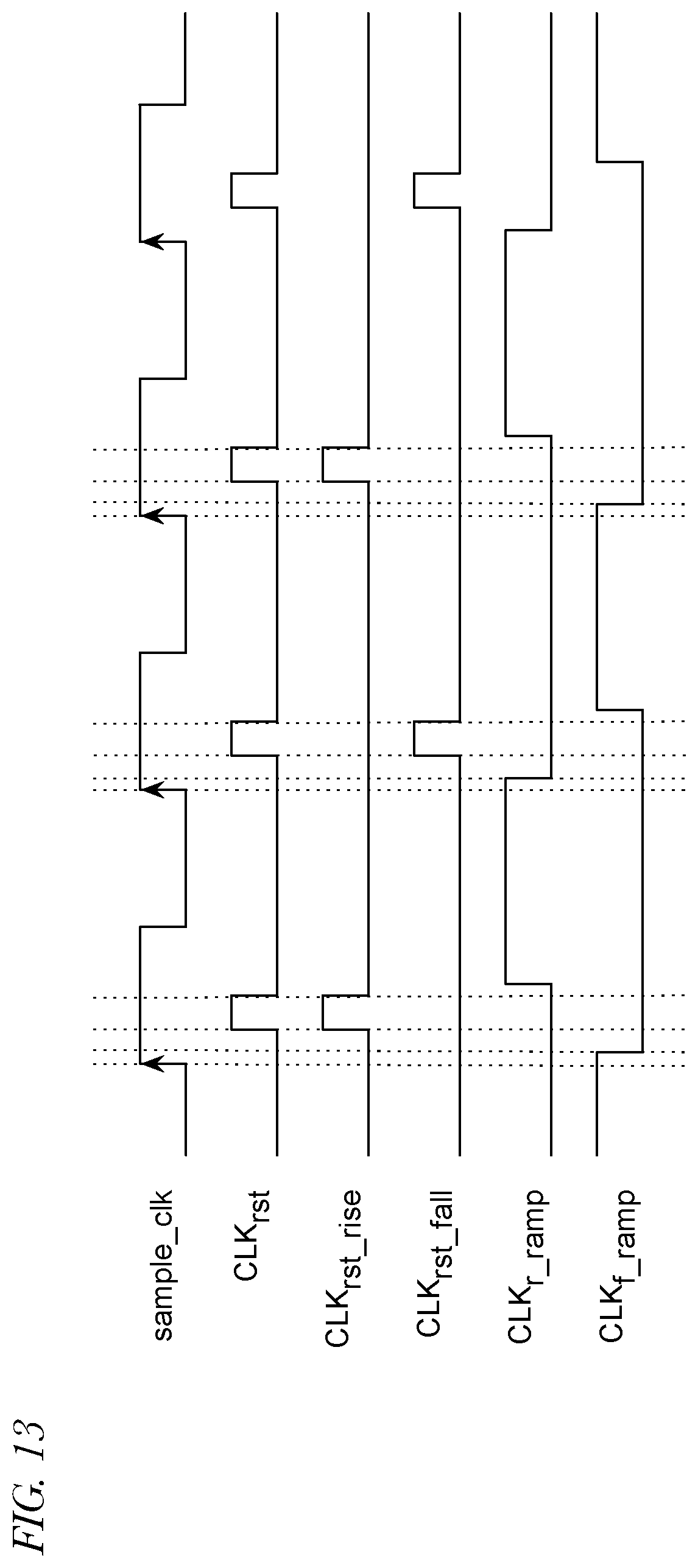
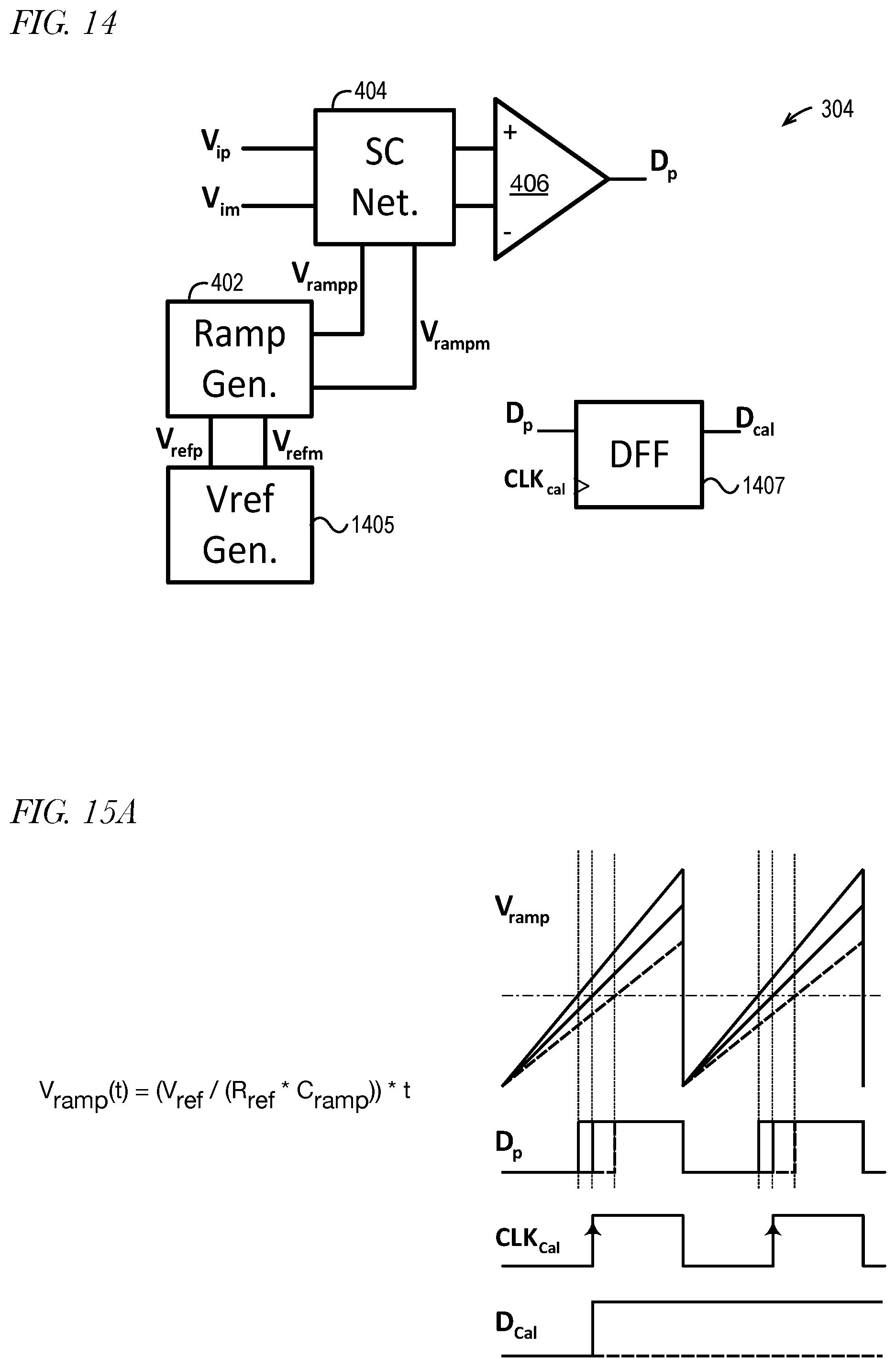
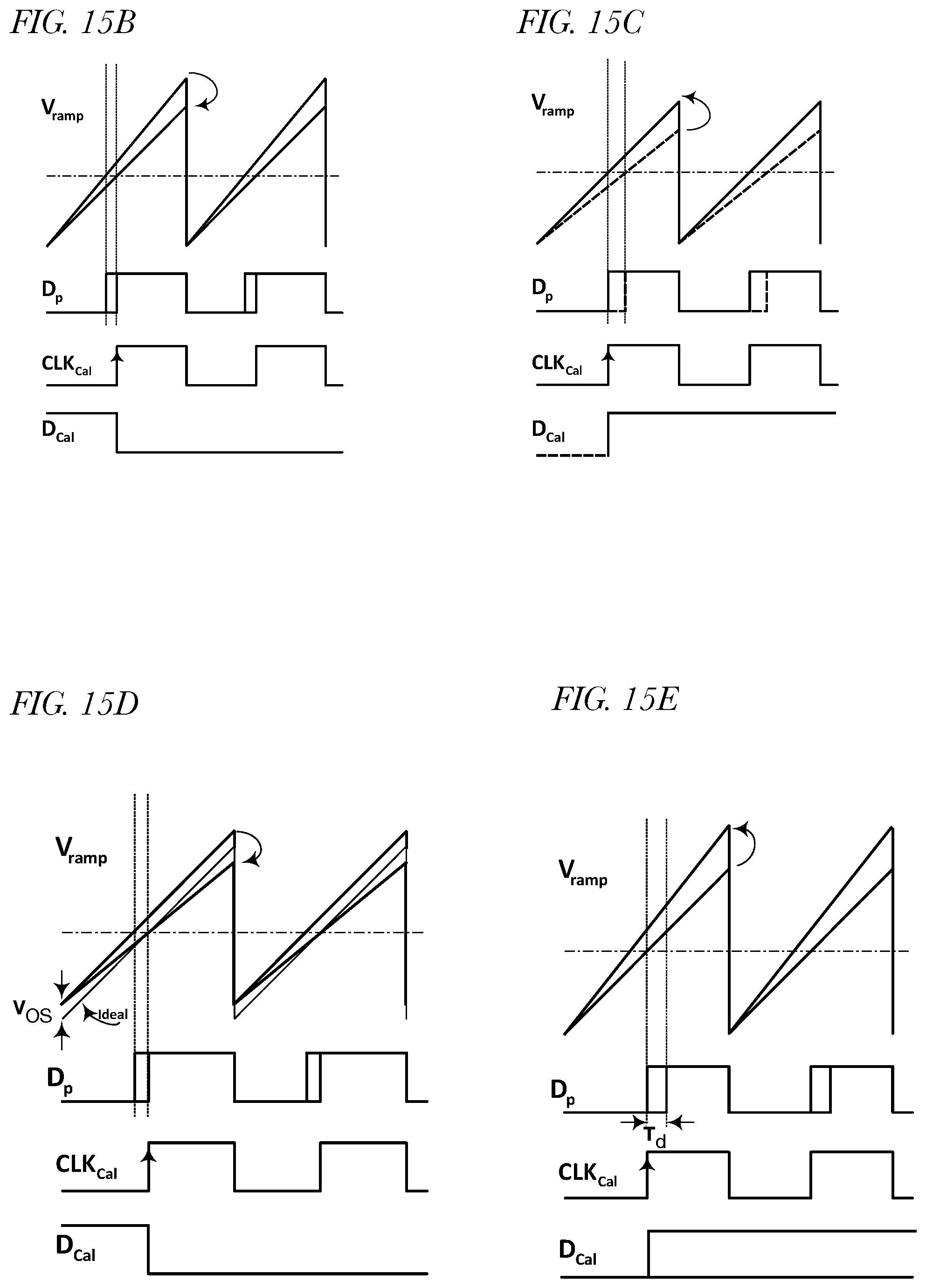
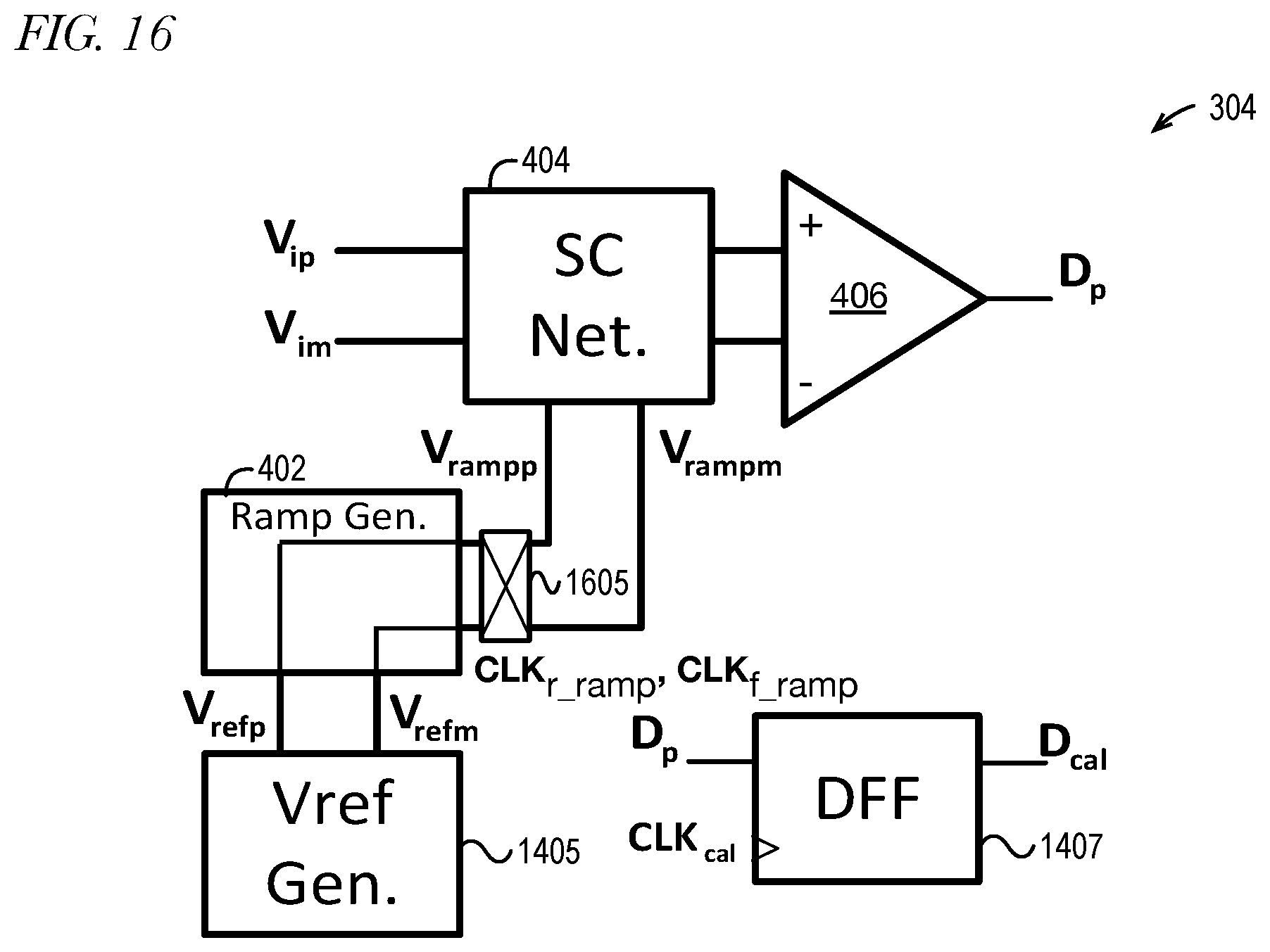
View All Diagrams
| United States Patent Application | 20200119725 |
| Kind Code | A1 |
| ZANBAGHI; RAMIN ; et al. | April 16, 2020 |
CHOPPED TRIANGULAR WAVE PWM QUANTIZER
Abstract
An apparatus in a PWM modulator includes a triangular wave generator that generates a triangular wave and a comparator that is responsive to a signal input to generate a signal output. An output of the PWM modulator is responsive to the comparator signal output. A polarity inversion circuit, coupled between the triangular wave generator and the comparator, is configured in one of the following ways: to provide the triangular wave to the comparator when the triangular wave has a first slope polarity and to provide a polarity-inverted version of the triangular wave to the comparator when the triangular wave has a second slope polarity opposite the first slope polarity; and to provide the signal input to the comparator when the triangular wave has the first slope polarity and to provide a polarity-inverted version of the signal input to the comparator when the triangular wave has the second slope polarity.
| Inventors: | ZANBAGHI; RAMIN; (Austin, TX) ; PARSI; ANURADHA; (Austin, TX) ; LEE; KYEHYUNG; (Austin, TX) ; MELANSON; JOHN L.; (Austin, TX) | ||||||||||
| Applicant: |
|
||||||||||
|---|---|---|---|---|---|---|---|---|---|---|---|
| Family ID: | 70159143 | ||||||||||
| Appl. No.: | 16/163638 | ||||||||||
| Filed: | October 18, 2018 |
Related U.S. Patent Documents
| Application Number | Filing Date | Patent Number | ||
|---|---|---|---|---|
| 62745457 | Oct 14, 2018 | |||
| Current U.S. Class: | 1/1 |
| Current CPC Class: | H03F 2200/351 20130101; H03M 3/484 20130101; H03M 3/442 20130101; H03K 4/50 20130101; H03F 2200/03 20130101; H03K 7/08 20130101; H03F 2200/331 20130101; H03M 3/458 20130101; H03K 4/066 20130101; H03F 2203/45514 20130101; H03F 3/2171 20130101; H03F 3/45475 20130101; H03K 3/017 20130101; H03M 3/422 20130101; H03F 3/187 20130101; H03F 3/185 20130101; H03K 4/06 20130101; H03K 4/56 20130101; H03F 3/387 20130101; H03F 3/217 20130101 |
| International Class: | H03K 4/06 20060101 H03K004/06; H02M 7/5387 20060101 H02M007/5387; H02M 7/5395 20060101 H02M007/5395; H03F 1/32 20060101 H03F001/32; H03F 3/217 20060101 H03F003/217; H04L 25/49 20060101 H04L025/49 |
Claims
1. An apparatus in a pulse width modulation (PWM) modulator, comprising: a triangular wave generator that generates a triangular wave; a comparator that is responsive to a signal input to generate a signal output, wherein an output of the PWM modulator is responsive to the comparator signal output; a polarity inversion circuit coupled to the comparator; wherein the polarity inversion circuit is configured in one of the following ways: to provide the triangular wave to the comparator when the triangular wave has a first slope polarity and to provide a polarity-inverted version of the triangular wave to the comparator when the triangular wave has a second slope polarity opposite the first slope polarity; and to provide the signal input to the comparator when the triangular wave has the first slope polarity and to provide a polarity-inverted version of the signal input to the comparator when the triangular wave has the second slope polarity and wherein the polarity-inversion circuit comprises a de-chopping switch.
2. The apparatus of claim 1, wherein the triangular wave generator generates the triangular wave having a period; and wherein the polarity inversion circuit provides the triangular wave/signal input and the polarity-inverted version of the triangular wave/signal input to the comparator during respective halves of the period.
3. The apparatus of claim 2, wherein the triangular wave period corresponds to twice a period of a PWM signal generated by the PWM modulator.
4. The apparatus of claim 2, wherein the triangular wave generator comprises a chopping switch that selectively couples respective opposite polarity reference current sources to respective opposite polarity inputs of an operational amplifier on alternating periods of the triangular wave.
5. The apparatus of claim 4, wherein the triangular wave generator is configured to reset the inputs of the operational amplifier to a common mode voltage at a beginning and at a middle of the period of the triangular wave.
6. The apparatus of claim 2, wherein the triangular wave comprises a differential voltage having positive and negative portions; and wherein the triangular wave generator is configured to reset the positive and negative portions of the triangular wave differential voltage to respective positive and negative reference voltages on alternating periods of the triangular wave.
7. (canceled)
8. A method, comprising: in a pulse width modulation (PWM) modulator including a triangular wave generator that generates a triangular wave, a comparator that is responsive to a signal input to generate a signal output, wherein an output of the PWM modulator is responsive to the comparator signal output, and a polarity inversion circuit coupled to the comparator: performing one of the following actions by the polarity inversion circuit: providing the triangular wave to the comparator when the triangular wave has a first slope polarity and providing a polarity-inverted version of the triangular wave to the comparator when the triangular wave has a second slope polarity opposite the first slope polarity; and providing the signal input to the comparator when the triangular wave has the first slope polarity and providing a polarity-inverted version of the signal input to the comparator when the triangular wave has the second slope polarity and wherein the polarity-inversion circuit comprises a de-chopping switch.
9. The method of claim 8, further comprising: generating, by the triangular wave generator, the triangular wave having a period; and providing, by the polarity inversion circuit, the triangular wave/signal input and the polarity-inverted version of the triangular wave/signal input to the comparator during respective halves of the period.
10. The method of claim 9, wherein the triangular wave period corresponds to twice a period of a PWM signal generated by the PWM modulator.
11. The method of claim 9, further comprising: wherein the triangular wave generator comprises a chopping switch; and selectively coupling, by the chopping switch, respective opposite polarity reference current sources to respective opposite polarity inputs of an operational amplifier on alternating periods of the triangular wave.
12. The method of claim 11, resetting, by the triangular wave generator, the inputs of the operational amplifier to a common mode voltage at a beginning and at a middle of the period of the triangular wave.
13. The method of claim 9, further comprising: wherein the triangular wave comprises a differential voltage having positive and negative portions; and resetting, by the triangular wave generator, the positive and negative portions of the triangular wave differential voltage to respective positive and negative reference voltages on alternating periods of the triangular wave.
14-21. (canceled)
22. An apparatus in a pulse width modulation (PWM) modulator, comprising: a triangular wave generator that generates a triangular wave; a comparator that is responsive to a signal input to generate a signal output, wherein an output of the PWM modulator is responsive to the comparator signal output; a polarity inversion circuit coupled to the comparator; wherein the polarity inversion circuit is configured in one of the following ways: to provide the triangular wave to the comparator when the triangular wave has a first slope polarity and to provide a polarity-inverted version of the triangular wave to the comparator when the triangular wave has a second slope polarity opposite the first slope polarity; and to provide the signal input to the comparator when the triangular wave has the first slope polarity and to provide a polarity-inverted version of the signal input to the comparator when the triangular wave has the second slope polarity; and wherein the triangular wave generator generates the triangular wave having a period; wherein the polarity inversion circuit provides the triangular wave/signal input and the polarity-inverted version of the triangular wave/signal input to the comparator during respective halves of the period; and wherein the triangular wave generator comprises a chopping switch that selectively couples respective opposite polarity reference current sources to respective opposite polarity inputs of an operational amplifier on alternating periods of the triangular wave.
23. The apparatus of claim 22, wherein the triangular wave period corresponds to twice a period of a PWM signal generated by the PWM modulator.
24. The apparatus of claim 23, wherein the triangular wave generator is configured to reset the inputs of the operational amplifier to a common mode voltage at a beginning and at a middle of the period of the triangular wave.
25. The apparatus of claim 22, wherein the triangular wave comprises a differential voltage having positive and negative portions; and wherein the triangular wave generator is configured to reset the positive and negative portions of the triangular wave differential voltage to respective positive and negative reference voltages on alternating periods of the triangular wave.
Description
CROSS REFERENCE TO RELATED APPLICATION(S)
[0001] This application claims priority based on U.S. Provisional Application, Ser. No. 62/745,457, filed Oct. 14, 2018, entitled MULTI-NON-IDEAL GAIN-AFFECTING CHARACTERISTIC CALIBRATABLE PWM MODULATOR HAVING QUANTIZER WITH CONTROLLABLE ANALOG GAIN AND CHOPPED TRIANGULAR WAVE, which is hereby incorporated by reference in its entirety.
BACKGROUND
[0002] Personal audio devices, including wireless telephones, such as mobile/cellular telephones, cordless telephones, mp3 players, and other consumer audio devices, are in widespread use. Such personal audio devices may include circuitry for driving a pair of headphones or one or more speakers. Such circuitry often includes a power amplifier for driving an audio output signal to headphones or speakers. Generally speaking, a power amplifier amplifies an audio signal by taking energy from a power supply and controlling an audio output signal to match an input signal shape but with a larger amplitude.
[0003] One example of an audio amplifier is a class-D amplifier. A class-D amplifier (also known as a "switching amplifier") may comprise an electronic amplifier in which the amplifying devices (e.g., transistors, typically metal-oxide-semiconductor field effect transistors) operate as electronic switches. In a class-D amplifier, a signal to be amplified may be converted to a series of pulses by pulse-width modulation, pulse-density modulation, or another method of modulation, such that the signal is converted into a modulated signal in which a characteristic of the pulses of the modulated signal (e.g., pulse widths, pulse density, etc.) is a function of the magnitude of the signal. After amplification with a class-D amplifier, the output pulse train may be converted to an unmodulated analog signal by passing through a passive low-pass filter, wherein such low-pass filter may be inherent in the class-D amplifier or a load driven by the class-D amplifier. Class-D amplifiers are often used due to the fact that they may be more power efficient than linear analog amplifiers, in that class-D amplifiers may dissipate less power as heat in active devices as compared to linear analog amplifiers. Typically, a pulse-width modulation (PWM) amplifier is chosen in order to provide accurate load voltage with desirable Total Harmonic Distortion (THD) and Power Supply Rejection Ratio (PSRR).
SUMMARY
[0004] In one embodiment, the present disclosure provides an apparatus in a pulse width modulation (PWM) modulator. The apparatus includes a triangular wave generator that generates a triangular wave and a comparator that is responsive to a signal input to generate a signal output. An output of the PWM modulator is responsive to the comparator signal output. The apparatus also includes a polarity inversion circuit, coupled between the triangular wave generator and the comparator, that is configured in one of the following ways: to provide the triangular wave to the comparator when the triangular wave has a first slope polarity and to provide a polarity-inverted version of the triangular wave to the comparator when the triangular wave has a second slope polarity opposite the first slope polarity; and to provide the signal input to the comparator when the triangular wave has the first slope polarity and to provide a polarity-inverted version of the signal input to the comparator when the triangular wave has the second slope polarity.
[0005] In one embodiment, the present disclosure provides a method in a pulse width modulation (PWM) modulator including a triangular wave generator that generates a triangular wave, a comparator that is responsive to a signal input to generate a signal output, wherein an output of the PWM modulator is responsive to the comparator signal output, and a polarity inversion circuit coupled between the triangular wave generator and the comparator. The method includes performing one of the following actions by the polarity inversion circuit: providing the triangular wave to the comparator when the triangular wave has a first slope polarity and providing a polarity-inverted version of the triangular wave to the comparator when the triangular wave has a second slope polarity opposite the first slope polarity; and providing the signal input to the comparator when the triangular wave has the first slope polarity and providing a polarity-inverted version of the signal input to the comparator when the triangular wave has the second slope polarity.
[0006] In one embodiment, the present disclosure provides a non-transitory computer-readable medium having instructions stored thereon that are capable of causing or configuring a pulse width modulation (PWM) modulator including a triangular wave generator that generates a triangular wave, a comparator that is responsive to a signal input to generate a signal output, wherein an output of the PWM modulator is responsive to the comparator signal output, and a polarity inversion circuit coupled between the triangular wave generator and the comparator, to perform one of the following actions by the polarity inversion circuit: providing the triangular wave to the comparator when the triangular wave has a first slope polarity and providing a polarity-inverted version of the triangular wave to the comparator when the triangular wave has a second slope polarity opposite the first slope polarity; and providing the signal input to the comparator when the triangular wave has the first slope polarity and providing a polarity-inverted version of the signal input to the comparator when the triangular wave has the second slope polarity.
BRIEF DESCRIPTION OF THE DRAWINGS
[0007] FIG. 1 is an illustration of an example personal audio device.
[0008] FIG. 2 is a block diagram of selected components of an example audio IC of a personal audio device.
[0009] FIG. 3 is a block diagram illustrating an example class-D modulator based on a pulse-width modulation (PWM) signal.
[0010] FIG. 4 is a block diagram illustrating in more detail the PWM quantizer of FIG. 3.
[0011] FIG. 5A is a block diagram illustrating the composition of an example combined linear gain of a quantizer and speaker driver.
[0012] FIG. 5B is a block diagram illustrating the composition of an example combined linear gain of a quantizer and speaker driver in a quantizer having an adjustable analog gain capability.
[0013] FIG. 6 is a table describing example gains and gain-related parameters for different PWM modulator speaker voltage operating modes.
[0014] FIG. 7 is a block diagram illustrating an example embodiment of the quantizer of FIG. 3 that enables the analog gain K.sub.ANA to be adjusted in order to compensate for a change in the speaker voltage between operating modes.
[0015] FIG. 8 is an example timing diagram that describes operation of the switched capacitor network of FIG. 7 to accomplish different analog gain values over different speaker voltage operating modes.
[0016] FIG. 9 is a block diagram of an example conventional ramp generator.
[0017] FIG. 10 is an example timing diagram illustrating operation of the ramp generator of FIG. 9.
[0018] FIG. 11 is a block diagram illustrating an example portion of a ramp generator of FIG. 4 that employs a chopping technique to generate a triangular wave for use in a quantizer of FIG. 3 of a PWM modulator of FIG. 3.
[0019] FIG. 12 is an example timing diagram illustrating operation of the ramp generator of FIG. 11.
[0020] FIG. 13 is an example timing diagram describing operation of the switches of the ramp generator of FIG. 11 to accomplish the waveforms described with respect to FIG. 12.
[0021] FIG. 14 is an example block diagram illustrating a system for calibrating a gain of the quantizer of FIG. 3.
[0022] FIGS. 15A through 15E are example timing diagrams illustrating aspects of gain calibration of the quantizer of FIG. 14.
[0023] FIG. 16 is a block diagram illustrating an example system for calibrating a gain of the quantizer of FIG. 3.
[0024] FIGS. 17A through 17C are example timing diagrams illustrating calibration of the gain of the quantizer of FIG. 3.
[0025] FIG. 18 is a flowchart illustrating an example method for calibrating the quantizer of FIG. 3.
DETAILED DESCRIPTION
[0026] Referring now to FIG. 1, an illustration of an example personal audio device 1, in accordance with embodiments of the present disclosure is shown. FIG. 1 depicts personal audio device 1 coupled to a headset 3 in the form of a pair of earbud speakers 8A and 8B. Headset 3 depicted in FIG. 1 is merely an example, and it is understood that personal audio device 1 may be used in connection with a variety of audio transducers, including without limitation, headphones, earbuds, in-ear earphones, and external speakers. A plug 4 may provide for connection of headset 3 to an electrical terminal of personal audio device 1. Personal audio device 1 may provide a display to a user and receive user input using a touch screen 2, or alternatively, a standard liquid crystal display (LCD) may be combined with various buttons, sliders, and/or dials disposed on the face and/or sides of personal audio device 1. As also shown in FIG. 1, personal audio device 1 may include an audio integrated circuit (IC) 9 for generating an analog audio signal for transmission to headset 3 and/or another audio transducer (e.g., a loudspeaker).
[0027] Referring now to FIG. 2, a block diagram of selected components of an example audio IC 9 of a personal audio device, in accordance with embodiments of the present disclosure is shown. In some embodiments, example audio IC 9 may be used to implement audio IC 9 of FIG. 1. As shown in FIG. 2, a microcontroller core 18 (e.g., a digital signal processor or "DSP") may supply a digital audio input signal DIG_IN to a digital-to-analog converter (DAC) 14, which may convert the digital audio input signal to an analog input signal V.sub.IN. DAC 14 may supply analog signal V.sub.IN to an amplifier 16 which may amplify or attenuate analog input signal V.sub.IN to provide an audio output signal V.sub.OUT, which may operate a speaker, headphone transducer, a line level signal output, and/or other suitable output.
[0028] Referring now to FIG. 3, a block diagram illustrating a class-D modulator 100 based on a pulse-width modulation (PWM) signal is shown. The class-D modulator 100 (e.g., included in amplifier 16 of FIG. 2) receives an input signal V.sub.IN (e.g., of FIG. 2) provided to a summing element 301, whose output is provided to a loop filter 302, whose output is provided to a quantizer 304, whose output is provided to a speaker driver 306. The output V.sub.OUT (e.g., of FIG. 2) of the speaker driver 306 is fed back to a negating input of the summing element 301 to form a closed loop. The speaker driver 306 is coupled to a switch 308 that provides a driver supply voltage V.sub.SPK to the speaker driver 306. The driver supply voltage V.sub.SPK may also be referred to as the drive voltage swing range. The switch 308 is controlled to select either a high-voltage (HV) supply V.sub.BAT (e.g., battery supply) or a low-voltage (LV) supply V.sub.BST (e.g., boosted battery supply) to provide as the driver supply voltage V.sub.SPK, or drive voltage swing range V.sub.SPK, to the speaker driver 306. In one embodiment, V.sub.BST is 12V for HV mode operation and V.sub.BAT is 4V for LV mode operation, although other embodiments are contemplated in which the values of V.sub.BST and V.sub.BAT are different. In one embodiment, the modulator 100 has HV and LV modes for the purpose of saving power.
[0029] In one embodiment, the class-D modulator 100 loop operates in the analog domain similar to a continuous-time delta-sigma analog-to-digital converter (ADC). Unlike a double-sampling ADC, which is based on pulse-density modulation (PDM), the class-D modulator 100 is based on PWM. The PWM quantizer 304 converts an analog signal into a PWM signal. The quantizer 304 and the speaker driver 306 have respective gain values. In particular, the gain of the speaker driver 306 is proportional to the driver supply voltage V.sub.SPK provided to the speaker driver 306.
[0030] Embodiments are described below in which the gain of the quantizer 304--more specifically an analog gain of the quantizer 304--is advantageously adjusted commensurate with a change in the speaker driver gain when the driver supply voltage V.sub.SPK changes in order to maintain a fixed combined gain of the quantizer 304 and speaker driver 306. As a result, a voltage range and associated ramp slope of a sawtooth waveform (compared with a signal input to generate a PWM output signal) generated by the quantizer 304 may advantageously be kept close and in some embodiments fixed. Embodiments are also described below in which the sawtooth waveform generator employs a chopping technique on an internally generated triangular wave to generate the sawtooth wave which results in reduced ramp capacitor reset times and swing voltages. Finally, embodiments of a calibration method are described in which multiple non-ideal characteristics (e.g., comparator time delay and offset, RC time constant of the ramp generator, etc.) of the quantizer 304 are measured and adjusted to improve the accuracy of the gain calibration of the quantizer 304.
[0031] Referring now to FIG. 4, a block diagram illustrating in more detail the PWM quantizer 304 of FIG. 3 is shown. The PWM quantizer 304 includes a ramp generator 402 that generates a sawtooth wave-shaped ramp voltage V.sub.ramp. In one embodiment, the ramp voltage V.sub.ramp is a differential voltage pair comprising a positive ramp voltage V.sub.rampp and negative ramp voltage V.sub.rampm. The PWM quantizer 304 also includes a first switched-capacitor network ("SC Net.") 404p and a second switched-capacitor network ("SC Net.") 404n, each of which receives the positive and negative ramp voltages V.sub.rampp and V.sub.rampm. The switched-capacitor network 404.sub.p/404.sub.n also receive a positive signal input voltage VIP and a negative signal input voltage V.sub.IM. The switched-capacitor network 404p/404n operate on the ramp voltages V.sub.rampp and V.sub.rampm and the signal input voltages V.sub.IP and V.sub.IM to generate respective outputs provided to respective comparators 406p and 406n, which generate respective outputs D.sub.P and D.sub.n that are provided to a central edge modulation (CEM) block 408. The CEM block 408 generates a differential PWM output signal D.sub.PWM having a positive component denoted D.sub.PWMp and a negative component denoted D.sub.PWMn which are provided to the speaker driver 306 of FIG. 3. The switched-capacitor network 404p/404n according to one embodiment are described in more detail with respect to FIG. 7 below.
[0032] Referring now to FIG. 5A, a block diagram illustrating the composition of a combined linear gain K.sub.TOTAL of the quantizer 304 and driver 306 gain is shown. As shown, components that contribute to the combined linear gain K.sub.TOTAL include an analog gain K.sub.ANA of the quantizer 304 (e.g., of switched capacitor network 404), a gain K.sub.DRV of the speaker driver 306, and a gain K.sub.CEM of the CEM block 408, as shown in FIG. 5A and in equation (1) below. That is, the combined gain K.sub.TOTAL of the quantizer 304 and driver 306 may be defined from linear analysis of the modulator 100 system as proportional to a product of the analog gain K.sub.ANA, the driver gain K.sub.DRV, and the CEM gain K.sub.CEM.
K.sub.TOTAL=K.sub.ANA*K.sub.DRV*K.sub.CEM (1)
[0033] As shown in equation (2) below, the driver gain K.sub.DRV is the ratio of the speaker voltage V.sub.SPK and the ramp voltage swing range V.sub.ramp(fd). Thus, when the operating mode is transitioned from HV mode to LV mode (or vice versa), the driver gain K.sub.DRV will be changed (assuming the ramp voltage swing range V.sub.ramp(fd) is maintained), and a change in the driver gain K.sub.DRV changes the combined gain K.sub.TOTAL. A change in the combined gain K.sub.TOTAL is undesirable because it changes the dynamics of the modulator 100 loop, e.g., changes the loop dynamics to be non-linear.
K DRV = V SPK V Ramp ( fd ) ( 2 ) ##EQU00001##
[0034] One solution is to keep the driver gain K.sub.DRV fixed across mode changes in order to maintain a fixed combined gain K.sub.TOTAL, which requires a change of the ramp voltage swing range V.sub.ramp(fd) to match the change in the speaker voltage V.sub.SPK in order to maintain the combined gain K.sub.TOTAL across the two modes, as may be observed from equation (3) which rearranges equation (2) to specify the ramp voltage swing range V.sub.ramp(fd) as the ratio of the speaker voltage V.sub.SPK and the speaker driver gain K.sub.DRV.
V Ramp ( fd ) = V SPK K DRV ( 3 ) ##EQU00002##
[0035] Per equations (4) below, in the example, it is assumed the analog gain K.sub.ANA is 0.5, the drive gain K.sub.DRV is 10, the CEM gain K.sub.CEM is 2, the total gain K.sub.TOTAL is 10, V.sub.BST is 12V for HV mode, and V.sub.BAT is 4V for LV mode. Consequently, as shown in equation (5), the ramp voltage swing range V.sub.ramp(fd) is 1.2 vpp in HV mode and 0.4 vpp in LV mode, which are summarized in the two left-most columns of the table of FIG. 6 denoted HV and LV (conv.).
Assume : K ANA = 0.5 , K DRV = 10 , K CEM = 2 , K TOTAL = 10 , V BST = 12 V , V BAT = 4 V ( 4 ) V Ramp ( fd ) = { V BST K DRV = 12 10 = 1.2 vpp ( HV mode ) V BAT K DRV = 4 10 = 0.4 vpp ( LV mode ) ( 5 ) ##EQU00003##
[0036] However, such a large difference in the ramp voltage swing range V.sub.ramp(fd) between the HV and LV modes, 1.2 vpp to 0.4 vpp, i.e., a factor of 3, is also highly undesirable because it may introduce sensitivity in the system. More specifically, because circuits in the PWM modulator 100 that perform voltage to time conversion (e.g., comparators and summing networks), for example, operate based on the sawtooth ramp characteristics, it may be difficult to design such components to operate properly in the two different modes.
[0037] Embodiments are described that advantageously, while maintaining a fixed combined gain K.sub.TOTAL, reduce the variation (or in some embodiments eliminate it) in the ramp voltage swing range V.sub.ramp(fd) and associated ramp slope between the two modes by adjusting the analog gain K.sub.ANA of the quantizer 304, as shown in FIG. 5B, to compensate for changes in the gain of the speaker driver 306 caused by a change of the speaker voltage V.sub.SPK values of the two modes.
[0038] Referring now to FIG. 7, a block diagram illustrating an embodiment of the quantizer 304 that enables the analog gain K.sub.ANA to be adjusted in order to compensate for a change in the speaker voltage V.sub.SPK between operating modes is shown. In the embodiment of FIG. 7, the sawtooth wave-shaped ramp voltage V.sub.ramp is coupled to the comparator 406 through a switched capacitor network 404 (e.g., switched capacitor network 404 of FIG. 4). The negative ramp voltage V.sub.rampm is coupled to the negative input of the comparator 406 through a switch controlled by a clock signal CLK.sub.f and then through a capacitor C2. The positive ramp voltage V.sub.rampp is coupled to the positive input of the comparator 406 through a switch controlled by clock signal CLK.sub.f and then through a capacitor C3. The node at the switch side of capacitor C2 is denoted node X, and the node at the switch side of capacitor C3 is denoted node Y. The other terminal of capacitor C2 is coupled to the negative ramp voltage V.sub.rampm through a switch controlled by a clock signal CLK.sub.r, and the other terminal of capacitor C3 is coupled to the positive ramp voltage V.sub.rampp through a switch controlled by clock signal CLK.sub.r. A common mode voltage V.sub.cm is also coupled to the positive and negative inputs of the comparator 406 through switches controlled by clock signal CLK.sub.r.
[0039] The negative input to the comparator 406 is also coupled through a switch controlled by clock signal CLK.sub.f to a node that is coupled to a capacitor C1 and to positive signal input V.sub.IP through a switch controlled by clock signal CLK.sub.r. The positive input to the comparator 406 is also coupled through a switch controlled by clock signal CLK.sub.f to a node that is coupled to a capacitor C4 and to negative signal input V.sub.IM through a switch controlled by clock signal CLK.sub.r. The other terminal of capacitor C1 is coupled to node X, and the other terminal of capacitor C4 is coupled to node Y. Common mode voltage V.sub.cm is also coupled to node X and to node Y through switches controlled by a clock signal CLK.sub.r-lv. Negative signal input V.sub.IM is coupled to node X through a switch controlled by a clock signal CLK.sub.r-lv, and positive signal input V.sub.IP is coupled to node Y through a switch controlled by a clock signal CLK.sub.r-lv.
[0040] Operation of the switched capacitor network 404 of FIG. 7 is described by the timing diagram of FIG. 8 to accomplish an analog gain K.sub.ANA of the switched capacitor network 404 having a value of 0.5 when operating in HV mode and a value of 1.0 when operating in LV mode (assuming respective values of 12V and 4V for the speaker voltage V.sub.SPK), as shown in the second-from-right column of the table of FIG. 6 denoted LV (emb. 1). Advantageously, controlling the respective analog gain KANA values of 0.5 and 1.0 maintains a combined gain K.sub.TOTAL of 10 for both operating modes, as shown in the table of FIG. 6. That is, generally speaking, the analog gain K.sub.ANA has a gain value (first gain value) while operating in the HV mode (first mode) and a different gain value (second gain value) while operating in the LV mode (second mode), and the driver gain K.sub.DRV has a gain value (third gain value) while operating in the first mode and a different gain value (fourth gain value) while operating in the second mode, and the product of the first and third gain values is approximately the same as the product of the second and fourth gain values advantageously resulting in an approximately fixed combined gain K.sub.TOTAL across the two modes. Further advantageously, controlling the respective analog gain K.sub.ANA values of 0.5 and 1.0 accomplishes ramp voltage swing ranges V.sub.ramp(fd) of 1.2 vpp and 0.8 vpp, respectively, for the two modes, which represents a significant reduction in the variation of the ramp voltage swing range V.sub.ramp(fd) over a conventional solution that does not adjust the analog gain K.sub.ANA. More specifically, as shown in the table of FIG. 6, the variation is advantageously reduced from a factor of 3 to a factor of 1.5.
[0041] In the embodiment of FIG. 7, the analog gain K.sub.ANA is adjustable by powers of two, yet the ratio of the speaker voltages V.sub.SPK may be non-powers of two, in which case the slope of the ramp voltage swing range V.sub.ramp(fd) may vary somewhat between the HV and LV modes; however, advantageously, the variation is significantly reduced with respect to a conventional amplifier not having the benefit of the variable analog gain K.sub.ANA embodiments, and the benefits described may still be realized by the variable analog gain K.sub.ANA embodiments. In other embodiments, the analog gain K.sub.ANA may be implemented to accomplish a non-power of two, as shown in the right-most column of the table of FIG. 6 denoted LV (emb. 2).
[0042] Advantageously, keeping the combined gain of the quantizer 304 and driver 306 close to the same or the same in both HV and LV mode avoids exacerbating non-idealities of the quantizer and exposing its design trade-offs and makes the modulator 100 loop behave similarly independent of the different speaker voltage values V.sub.SPK.
[0043] Referring now to FIGS. 9 and 10, a prior art block diagram illustrating a portion of a ramp generator 902 used to generate a sawtooth wave and a timing diagram illustrating operation of the ramp generator 902, respectively, are shown. The ramp generator 902 includes an amplifier 904 having positive and negative inputs and positive and negative outputs. Coupled in parallel between the positive input and the negative output of the amplifier 904 are a first ramp capacitor C.sub.rampm and a first switch controlled by CLK.sub.rst; additionally, coupled in parallel between the negative input and the positive output of the amplifier 904 are a second ramp capacitor C.sub.rampp and a second switch controlled by CLK.sub.rst. When the switches are open (e.g., CLK.sub.rst is deasserted), two push-pull reference currents I.sub.ref (generated by current sources) are passing through the ramp capacitors C.sub.rampm and C.sub.rampp generating respectively negative and positive sloping ramp voltages V.sub.rampm and V.sub.rampp at the respective negative and positive outputs of the amplifier 904. The reference current I.sub.ref is the quotient of a reference voltage V.sub.ref and a reference resistance R.sub.ref. Assertion of CLK.sub.rst causes energy stored in the ramp capacitors C.sub.rampm and C.sub.rampp to dissipate causing the ramp voltages V.sub.rampm and V.sub.rampp to be reset to a common mode voltage V.sub.cm before the next ramp cycle, resulting in a pair of complementary polarity sawtooth waves, as shown in FIG. 10. A resulting sawtooth wave is generated as the difference between the positive ramp voltage V.sub.rampp and the negative ramp voltage V.sub.rampm. A ramp voltage swing range V.sub.ramp(fd) is shown as the difference between the maximum value of V.sub.rampp and the minimum value of V.sub.rampm, which is also shown as the difference between the maximum value of the sawtooth wave and the common mode voltage V.sub.cm.
[0044] A disadvantage of the prior art ramp generator 902 of FIGS. 9 and 10 that resets the sawtooth wave to the common mode voltage V.sub.cm is that it requires on each cycle a relatively wide reset time that is required to discharge the ramp capacitors C.sub.rampm and C.sub.rampp, which may reduce the modulation index (MI) associated with a PWM modulator that employs the ramp generator 902. Another disadvantage is that it requires the ramp voltages to reach relatively high voltage swing values. Advantageously, embodiments of an improved ramp generator are described below that address these disadvantages.
[0045] Referring now to FIG. 11, a block diagram illustrating a portion of a ramp generator 402 (e.g., ramp generator 402 of FIG. 4) that employs a chopping technique to generate a triangular wave for use in a quantizer (e.g., quantizer 304 of FIG. 3) of a PWM modulator (e.g., PWM modulator 100 of FIG. 3) is shown. The ramp generator 402 includes an amplifier 1104 having positive and negative inputs and positive and negative outputs. Coupled between the positive input and the negative output of the amplifier 1104 is a ramp capacitor C.sub.rampm and coupled between the negative input and the positive output of the amplifier 1104 is a ramp capacitor C.sub.rampp.
[0046] The ramp generator 402 also includes a chopping block 1106, or chopping switch 1106, whose first and second outputs are coupled to the positive and negative inputs of the amplifier 1104, respectively. The two inputs to the chopping switch 1106 are coupled to receive respective positive and negative reference currents I.sub.refp and I.sub.refm. The positive reference current I.sub.refp is the quotient of positive reference voltage V.sub.refp and a reference resistance R.sub.ref, and the negative reference current I.sub.refm is the quotient of negative reference voltage V.sub.refm and the reference resistance R.sub.ref. The chopping switch 1106 operates as a crossbar switch that may be dynamically controlled to operate in either a pass-through configuration or a cross configuration. In the pass-through configuration, the chopping switch 1106 connects the positive reference current I.sub.refp to the positive input of the amplifier 1104 and the negative reference current I.sub.refm to the negative input of the amplifier 1104. In the cross configuration, the chopping switch 1106 connects the positive reference current I.sub.refp to the negative input of the amplifier 1104 and the negative reference current I.sub.refm to the positive input of the amplifier 1104. Depending upon the configuration of the chopping switch 1106, the reference currents I.sub.refp and I.sub.refm selectively push-pull through the ramp capacitors C.sub.rampp and C.sub.rampm to generate respective negative and positive ramp voltages V.sub.rampm and V.sub.rampp at the respective negative and positive outputs of the amplifier 1104, as described in more detail below.
[0047] A common mode voltage V.sub.cm is selectively coupled to the positive and negative inputs of the amplifier 1104 through switches controlled by a clock signal CLK.sub.rst. The node holding the negative ramp voltage V.sub.rampm is selectively coupled to the negative reference voltage V.sub.refm through a switch controlled by a clock signal CLK.sub.rst fall and is selectively coupled to the positive reference voltage V.sub.refp through a switch controlled by a clock signal CLK.sub.rst rise. The node holding the positive ramp voltage V.sub.rampp is selectively coupled to the negative reference voltage V.sub.refm through a switch controlled by the clock signal CLK.sub.rst_rise and is selectively coupled to the positive reference voltage V.sub.refp through a switch controlled by the clock signal CLK.sub.rst_fall.
[0048] The ramp generator 402 also includes a de-chopping block 1108, or de-chopping switch 1108, whose first and second inputs are coupled to the negative and positive outputs of the amplifier 1104, respectively. The two outputs of the de-chopping switch 1108 are coupled to nodes that hold respective negative and positive output voltages V.sub.outm and V.sub.outp that may be provided to other portions of a quantizer (e.g., to switched capacitor network 404 for provision to comparator 406 of FIG. 4 of quantizer 304 of FIG. 3) for use in generating a PWM signal, e.g., for provision to a speaker driver (e.g., speaker driver 306 of FIG. 3) for driving a speaker for audio generation. The de-chopping switch 1108 operates as a crossbar switch that may be dynamically controlled to operate in either a pass-through configuration or a cross configuration, similar to the chopping switch 1106. In the pass-through configuration, the de-chopping switch 1108 connects the negative ramp voltage V.sub.rampm to the negative output voltage V.sub.outm node and the positive ramp voltage V.sub.rampp to the positive output voltage V.sub.outp node. In the cross configuration, the de-chopping switch 1108 connects the negative ramp voltage V.sub.rampm to the positive output voltage V.sub.outp node and the positive ramp voltage V.sub.rampp to the negative output voltage V.sub.outm node.
[0049] Referring now to FIG. 12, a timing diagram illustrating operation of the ramp generator 402 of FIG. 11 is shown. At the beginning of a first sampling period, CLK.sub.rst is asserted to close the switches to apply the common mode voltage V.sub.cm to the inputs of the amplifier 1104. Additionally, CLK.sub.rst fall is asserted to apply the negative reference voltage V.sub.refm to the node holding the negative ramp voltage V.sub.rampm and to apply the positive reference voltage V.sub.refp to the node holding the positive ramp voltage V.sub.rampp. Still further, the chopping switch 1106 is controlled to be in the cross configuration to connect the positive reference current I.sub.refp to the negative input of the amplifier 1104 and to connect the negative reference current I.sub.refm to the positive input of the amplifier 1104. The chopping switch 1106 is maintained in the cross configuration through the sampling period to cause the voltage across ramp capacitor C.sub.rampm to increase which increases the negative ramp voltage V.sub.rampm from its negative peak (approximately V.sub.cm minus V.sub.refm) to its positive peak (approximately V.sub.cm plus V.sub.refp) and to cause the voltage across ramp capacitor C.sub.rampp to decrease which decreases the positive ramp voltage V.sub.rampp from its positive peak (approximately V.sub.cm plus V.sub.refp) to its negative peak (approximately V.sub.cm minus V.sub.refm), as shown. The result is a positively sloping ramp voltage V.sub.ramp (shown in FIG. 12 as a non-differential voltage V.sub.rampm minus V.sub.rampp) having a swing of approximately the difference between the positive reference voltage V.sub.refp minus the negative reference voltage V.sub.refm, referred to as V.sub.ramp(fd), which is a first period of what will become a triangular wave, as shown. Further during the first sampling period, the de-chopping switch 1108 is controlled to be in the pass-through configuration to cause the negative ramp voltage V.sub.rampm to be provided as the negative output voltage V.sub.outm and to cause the positive ramp voltage V.sub.rampp to be provided as the positive output voltage V.sub.outp. The operation of the de-chopping switch 1108 in pass-through configuration results in the positively sloping ramp voltage V.sub.ramp of swing V.sub.ramp(fd) being passed through and provided on the output voltage V.sub.OUT, which is a first period of what will become a sawtooth wave, as shown.
[0050] As will be understood from the following description, the ramp voltage V.sub.ramp is a negatively sloping ramp also having a swing of V.sub.ramp(fd) during the next sampling period, which will be polarity-inverted to form another positively sloping ramp of the sawtooth wave of the output voltage V.sub.OUT. This pattern repeats for subsequent sampling period pairs, resulting in a triangular wave ramp voltage V.sub.ramp, which is polarity-swapped on alternating periods (e.g., on periods in which the triangular wave ramp voltage V.sub.ramp is negatively sloping) by the de-chopping switch 1108 to form the sawtooth wave on the output voltage V.sub.OUT, as shown. As a result, the ramp generator 402 advantageously enjoys the benefits perceived by smaller swings and reset times of the ramp capacitors, as described in more detail below.
[0051] In the next (second) sampling period, CLK.sub.rst is again asserted to apply the common mode voltage V.sub.cm to the inputs of the amplifier 1104. Additionally, CLK.sub.rst rise is asserted to apply the positive reference voltage V.sub.refp to the node holding the negative ramp voltage V.sub.rampm and to apply the negative reference voltage V.sub.refm to the node holding the positive ramp voltage V.sub.rampp. This manner of operation has the advantage of resetting the respective ramp voltages to the relevant reference voltage in the event that the respective ramp voltages at their peak did not reach the relevant reference voltage during their run up/down, which may help avoid drift away from the relevant reference voltages. Still further, the chopping switch 1106 is controlled to be in the pass-through configuration to connect the positive reference current I.sub.refp to the positive input of the amplifier 1104 and to connect the negative reference current I.sub.refm to the negative input of the amplifier 1104. The chopping switch 1106 is maintained in the pass-through configuration through the second sampling period to cause the voltage across ramp capacitor C.sub.rampm to decrease which decreases the negative ramp voltage V.sub.rampm from its positive peak to its negative peak and to cause the voltage across ramp capacitor C.sub.rampp to increase which increases the positive ramp voltage V.sub.rampp from its negative peak to its positive peak, as shown. Further during the second sampling period, the de-chopping switch 1108 is controlled to be in the cross configuration to cause the negative ramp voltage V.sub.rampm to be provided as the positive output voltage V.sub.outp and to cause the positive ramp voltage V.sub.rampp to be provided as the negative output voltage V.sub.outm. As shown in FIG. 12, a negatively sloping ramp voltage V.sub.ramp is provided to the de-chopping switch 1108 as a second period of a triangular wave having a swing of approximately V.sub.ramp(fd). Furthermore, operating in the cross configuration, the de-chopping switch 1108 polarity-inverts the received negatively sloping ramp voltage V.sub.ramp and provides the polarity-inverted version thereof as a positively sloping ramp having a swing of approximately V.sub.ramp(fd) on the output voltage V.sub.OUT as a second period of the sawtooth wave.
[0052] In the next (third) sampling period, as in the first sampling period, CLK.sub.rst is again asserted to apply the common mode voltage V.sub.cm to the inputs of the amplifier 1104, CLK.sub.rst_fall is asserted to apply the negative reference voltage V.sub.refm to the node holding the negative ramp voltage V.sub.rampm and to apply the positive reference voltage V.sub.refp to the node holding the positive ramp voltage V.sub.rampp (advantageously resetting the respective ramp voltages to avoid drift away from the reference values), and the chopping switch 1106 is controlled to be in the cross configuration to connect the negative reference current I.sub.refm to the positive input of the amplifier 1104 and to connect the positive reference current I.sub.refp to the negative input of the amplifier 1104, which is maintained through the third sampling period to increase the negative ramp voltage V.sub.rampm from its negative peak to its positive peak and to decrease the positive ramp voltage V.sub.rampp from its positive peak to its negative peak, as shown. Further during the third sampling period, the de-chopping switch 1108 is controlled to be in the pass-through configuration to cause the positive ramp voltage V.sub.rampp to be provided as the positive output voltage V.sub.outp and to cause the negative ramp voltage V.sub.rampm to be provided as the negative output voltage V.sub.outm. As shown in FIG. 12, a positively sloping ramp voltage V.sub.ramp of a third period of a triangular wave is provided to and passed through by the de-chopping switch 1108 to provide a positively sloping ramp having a swing of approximately V.sub.ramp(fd) on the output voltage V.sub.OUT as a third period of the sawtooth wave.
[0053] The operation of the various switches of the ramp generator 402 of FIG. 11 to accomplish the waveforms described with respect to FIG. 12 is shown in the timing diagram of FIG. 13.
[0054] Advantages of the use of a chopping technique to convert a triangular wave, employed internal to the ramp generator 402, to produce a sawtooth wave may now be described. First, the purpose of the PWM modulator is to convert continuous voltage domain information into time domain information in which the time domain has a period T. A large reset time in the conventional ramp generator 902 of FIG. 9 (i.e., time required to reset the capacitors to the common mode voltage) reduces the usable portion of the period T, which may result in a loss of dynamic range, for example. In a lower voltage mode in which the duty cycle may need to be increased to provide sufficient pulse energy, the large reset time may particularly exacerbate operation since it may detrimentally affect the ability to increase the duty cycle, for example. Advantageously, embodiments have been described that reduce the reset time. Because in the embodiment of FIGS. 11 and 12, the ramp polarity is flipped, or inverted, at the end of each period, no sudden discharge of the ramp capacitors occurs and no large reset time is required. The reduced capacitor reset time regains the portion of the period lost by the conventional approach and may therefore improve the dynamic range of the PWM modulator 100. Second, due to the pre-charging of the ramp capacitors, the voltage swing of the ramp is reduced to approximately half the maximum voltage swing, as may be observed from FIG. 12. This voltage swing reduction may result in power savings especially for low voltage designs. Finally, as may be observed from FIG. 12, a sawtooth wave of swing V.sub.ramp(fd) (V.sub.refp minus V.sub.refm) is provided on the output voltage V.sub.OUT of the ramp generator 402 similar to the sawtooth wave of FIG. 10, which advantageously enables reuse of various system elements (e.g., comparator 406 or the switch capacitor network 404) with the added benefits of reduced capacitor reset time and swing values as a result of the manner in which the ramp generator 402 produces a sawtooth wave from an internally-generated triangular wave.
[0055] In an alternate embodiment, the de-chopping switch 1108 provides a polarity-inverted version of the signal input V.sub.IN to the comparator 406 on alternating sampling periods, rather than a polarity-inverted version of the triangular wave, which may effectively accomplish a similar result.
[0056] Referring now to FIG. 14, a block diagram illustrating a system for calibrating a gain of a quantizer (e.g., quantizer 304 of FIG. 3) is shown. The system includes a ramp generator 402, switched capacitor network 404, and comparator 406 (e.g., of FIG. 4). The system also includes a D flip-flop 1407 and a voltage reference generator 1405 that provides the reference voltage V.sub.refp and V.sub.refm to the ramp generator 402. The ramp generator 402 provides the ramp voltage V.sub.rampp and V.sub.rampm to the switched capacitor network 404 which also receives the input signal V.sub.IP and V.sub.IM. The comparator 406 outputs a value D.sub.P which is provides as the data input to the D flip-flop 1407. The output of the D flip-flop 1407 is value D.sub.cal. The D flip-flop 1407 is clocked by a calibration clock CLK.sub.cal.
[0057] Referring now to FIGS. 15A through 15E, timing diagrams illustrating aspects of gain calibration of the quantizer 304 of FIG. 14 are shown. Process, voltage, and temperature variations may change the characteristics of the operation of the quantizer 304, such as the characteristics of the ramp generated by the ramp generator 402. The changes may be due to changes in the characteristics of the reference resistance R.sub.ref and ramp capacitance C.sub.ramp, for example. The ramp voltage as a function of time V.sub.ramp(t) is proportional to the ratio of the reference voltage V.sub.ref and the product of the reference resistance R.sub.ref and the ramp capacitance C.sub.ramp, as shown in equation (6). Gain calibration is performed in order to capture the gain error in the time domain and correct the gain error.
V Ramp ( t ) = V ref R ref * C ramp ( 6 ) ##EQU00004##
[0058] During calibration, the common mode voltage V.sub.cm is connected to the signal inputs, and the comparator 406 compares the ramp voltage V.sub.ramp to the common mode voltage V.sub.cm. The calibration reference clock CLK.sub.cal causes the D flip-flop 1407 to latch the comparator 406 output D.sub.P, as shown in FIG. 15A.
[0059] For an ideal ramp voltage V.sub.ramp, the crossing occurs at the midpoint of the ramp. If the ramp slope is higher than normal (i.e., higher gain), a trim bit is changed in a step by step manner to reduce the slope of the ramp voltage V.sub.ramp until the polarity of D.sub.cal flips, as shown in FIG. 15B. Conversely, if the ramp slope is lower than normal (i.e., lower gain), the trim bit is changed in a step by step manner to increase the slope of the ramp voltage V.sub.ramp the until the polarity of D.sub.cal flips, as shown in FIG. 15C.
[0060] Various non-idealities may exist in the quantizer 304. For example, the comparator 406 may have an offset which creates an error term on the gain calibration. The gain calibration process only looks for the crossing and perceives the offset as a gain error even when the slope of the ramp voltage V.sub.ramp is correct. Adjusting to make the crossing mid-ramp creates an undesired gain error, shown in FIG. 15D as an offset voltage V.sub.OS.
[0061] For another example, the comparator 406 may have a time delay T.sub.d, shown in FIG. 15E, which creates an error term on the gain calibration. The gain calibration process may perceive the time delay T.sub.d as a gain error even when the slope of the ramp voltage V.sub.ramp is correct. More specifically, the delay error T.sub.d is treated like a voltage domain error. Adjusting to offset the time delay T.sub.d creates an undesired error in the slope of the ramp voltage V.sub.ramp, as shown.
[0062] Advantageously, embodiments of an improved calibration process are now described that removes the comparator offset V.sub.OS and compactor delay T.sub.d so that they do not create a gain error term which may advantageously result in a more accurate calibration of the gain of the quantizer 304, e.g., the ramp gain/slope.
[0063] Referring now to FIG. 16, a block diagram illustrating an improved system for calibrating a gain of a quantizer (e.g., quantizer 304 of FIG. 3) is shown. The system is similar in many respects to the system of FIG. 14. However, the system of FIG. 16 includes a chopping switch 1605 coupled between the output of the ramp generator 402 and the input of the switched capacitor network 404. Additionally, in the system of FIG. 16, the reference voltages V.sub.refp and V.sub.refm are passed through the ramp generator 402 to the chopping switch 1605 such that during the offset calibration process of quantizer 304, ramp voltages are not generated. That is, the ramp generator 402 is transparent to the reference voltages V.sub.refp and V.sub.refm. The chopping switch 1605 may operate in a pass-through configuration to connect the positive voltage reference V.sub.refp to the positive ramp voltage V.sub.rampp input of the switched capacitor network 404 and to connect the negative voltage reference V.sub.refm to the negative ramp voltage V.sub.rampm input. Alternatively, the chopping switch 1605 may operate in a cross configuration to connect the positive voltage reference V.sub.refp to the negative ramp voltage V.sub.rampm input of the switched capacitor network 404 and to connect the negative voltage reference V.sub.refm to the positive ramp voltage V.sub.rampp input. The chopping switch 1605 is controlled by a clock signal CLK.sub.r_ramp and CLK.sub.f ramp according to the normal operation of those signals within the ramp generator 402 as described with respect to FIG. 13. Thus, by operation of the chopping switch 1605, the ramp voltage inputs to the switched capacitor network 404 are a chopped version of the reference voltage V.sub.refp and V.sub.refm.
[0064] During calibration, the common mode voltage V.sub.cm is connected to the signal inputs. Initially, higher than normal values of the reference voltage V.sub.refp and V.sub.refm are provided through the ramp generator 402 to the chopping switch 1605 and are scaled down over time until two consecutive values of the comparator 406 output D.sub.P are the same, at which time the comparator 406 offset V.sub.OS is measured, as shown in the timing diagram of FIG. 17A.
[0065] Referring now to FIG. 17B, a timing diagram illustrating measurement of time delay T.sub.d of the comparator 406. The system set up is similar to that of the offset V.sub.OS measurement. However, the smallest value of the reference voltage V.sub.refp and V.sub.refm is provided and remains fixed through the measurement process. The output D.sub.P of comparator 406 is skewed from CLK.sub.r_ramp by the comparator 406 delay T.sub.d. The calibration clock CLK.sub.cal, whose rising edge is trimmable, retimes the comparator 406 output D.sub.p. The rising edge of the calibration clock CLK.sub.cal starts from the rising edge of CLK.sub.r_ramp and gets incremented. When the polarity of D.sub.cal flips, the delay T.sub.d is measured, as shown in FIG. 17B.
[0066] Referring now to FIG. 17C, a timing diagram illustrating calibration of the gain of the quantizer 304 is shown. First, the offset voltage V.sub.OS of comparator 406 measured according to the process described with respect to FIG. 17A is applied to the reference voltage V.sub.refp and V.sub.refm to code shift them up or down. Additionally, time delay T.sub.d of the comparator 406 measured according to the process described with respect to FIG. 17B is applied to the calibration clock CLK.sub.cal to delay the edge of the calibration clock CLK.sub.cal to offset the effect of the comparator 406 delay T.sub.d. Then, when the offset V.sub.OS and delay T.sub.d have been adjusted, the gain error of the quantizer 304 (e.g., the ramp slope) is calibrated.
[0067] In addition to the offset and the time delay of the comparator, other non-ideal characteristics of the quantizer 304 that may be separately measured and adjusted may include the RC time constant used by the ramp generator to generate the ramp voltage; a bandgap used in a current source of the quantizer; a resistor, capacitor and/or transistor size ratio that controls a gain of the quantizer; a clock speed of the quantizer; and various circuit parasitic. These other non-ideal characteristics of the quantizer 304 may be measured in addition to, in place of, and/or in combination with the comparator 406 offset V.sub.OS and time delay T.sub.d and adjusted for while the gain error of the quantizer 304 is calibrated.
[0068] Referring now to FIG. 18, a flowchart illustrating a method for calibrating a quantizer is shown. Operation begins at block 1802.
[0069] At block 1802, a first non-ideality is measured (e.g., comparator offset V.sub.OS per FIG. 17A). The operation proceeds to block 1804.
[0070] At block 1804, a second non-ideality is measured (e.g., comparator delay T.sub.d per FIG. 17B). The operation proceeds to block 1806.
[0071] At block 1806, additional non-idealities may be measured (e.g., RC time constant, current source bandgap, resistor/capacitor/transistor size ratio clock speed). The operation proceeds to block 1808.
[0072] At block 1808, the quantizer 304 is adjusted using the values of the non-idealities measured at blocks 1802 through 1806. The operation proceeds to block 1812.
[0073] At block 1812, the gain of the quantizer 304 is calibrated while the quantizer 304 is adjusted using the non-ideality measured values.
[0074] It should be understood--especially by those having ordinary skill in the art with the benefit of this disclosure--that the various operations described herein, particularly in connection with the figures, may be implemented by other circuitry or other hardware components. The order in which each operation of a given method is performed may be changed, unless otherwise indicated, and various elements of the systems illustrated herein may be added, reordered, combined, omitted, modified, etc. It is intended that this disclosure embrace all such modifications and changes and, accordingly, the above description should be regarded in an illustrative rather than a restrictive sense.
[0075] Similarly, although this disclosure refers to specific embodiments, certain modifications and changes can be made to those embodiments without departing from the scope and coverage of this disclosure. Moreover, any benefits, advantages, or solutions to problems that are described herein with regard to specific embodiments are not intended to be construed as a critical, required, or essential feature or element.
[0076] Further embodiments likewise, with the benefit of this disclosure, will be apparent to those having ordinary skill in the art, and such embodiments should be deemed as being encompassed herein. All examples and conditional language recited herein are intended for pedagogical objects to aid the reader in understanding the disclosure and the concepts contributed by the inventor to furthering the art and are construed as being without limitation to such specifically recited examples and conditions.
[0077] This disclosure encompasses all changes, substitutions, variations, alterations, and modifications to the example embodiments herein that a person having ordinary skill in the art would comprehend. Similarly, where appropriate, the appended claims encompass all changes, substitutions, variations, alterations, and modifications to the example embodiments herein that a person having ordinary skill in the art would comprehend. Moreover, reference in the appended claims to an apparatus or system or a component of an apparatus or system being adapted to, arranged to, capable of, configured to, enabled to, operable to, or operative to perform a particular function encompasses that apparatus, system, or component, whether or not it or that particular function is activated, turned on, or unlocked, as long as that apparatus, system, or component is so adapted, arranged, capable, configured, enabled, operable, or operative.
* * * * *
D00000

D00001

D00002

D00003

D00004

D00005

D00006

D00007

D00008

D00009

D00010

D00011

D00012
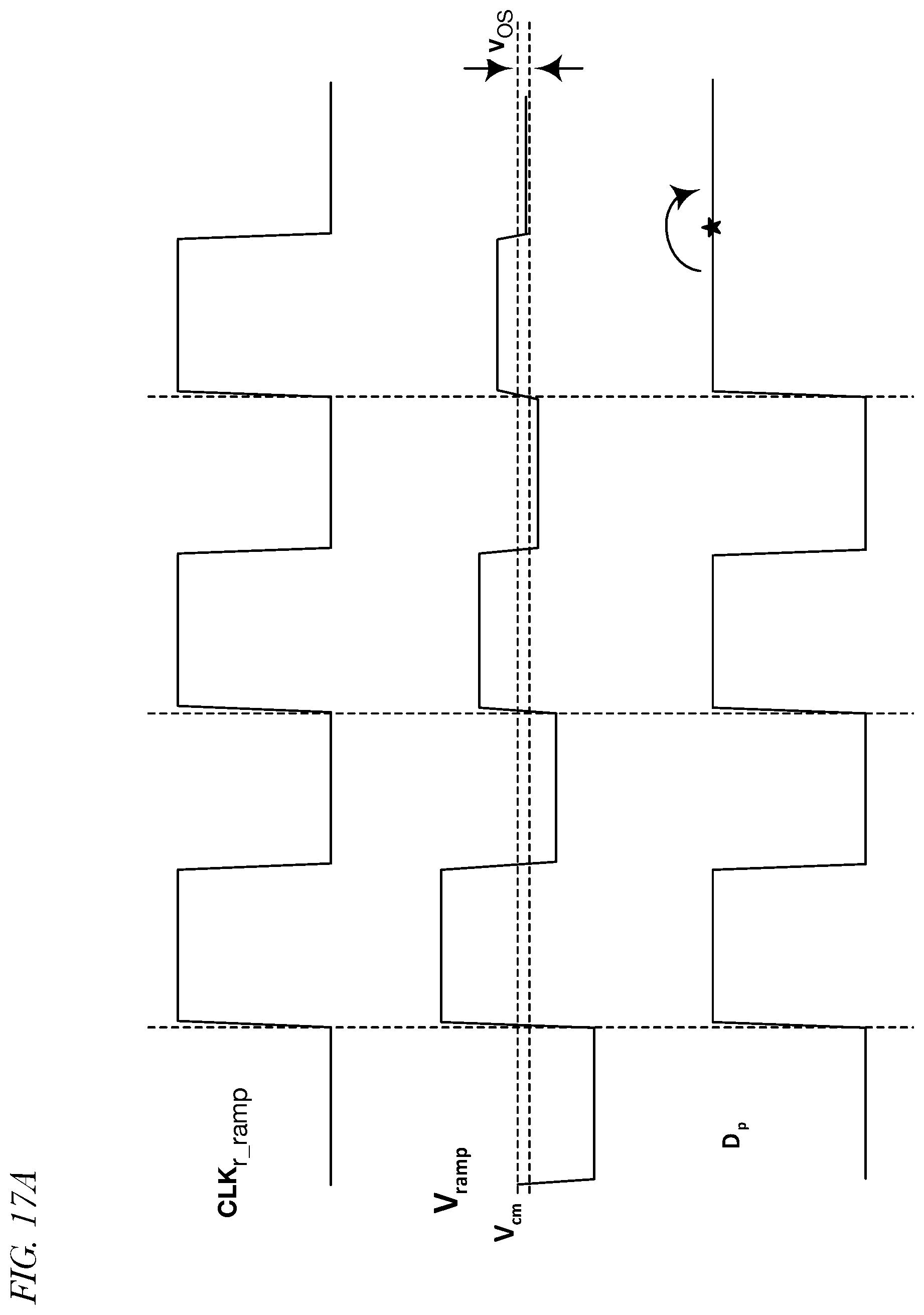
D00013
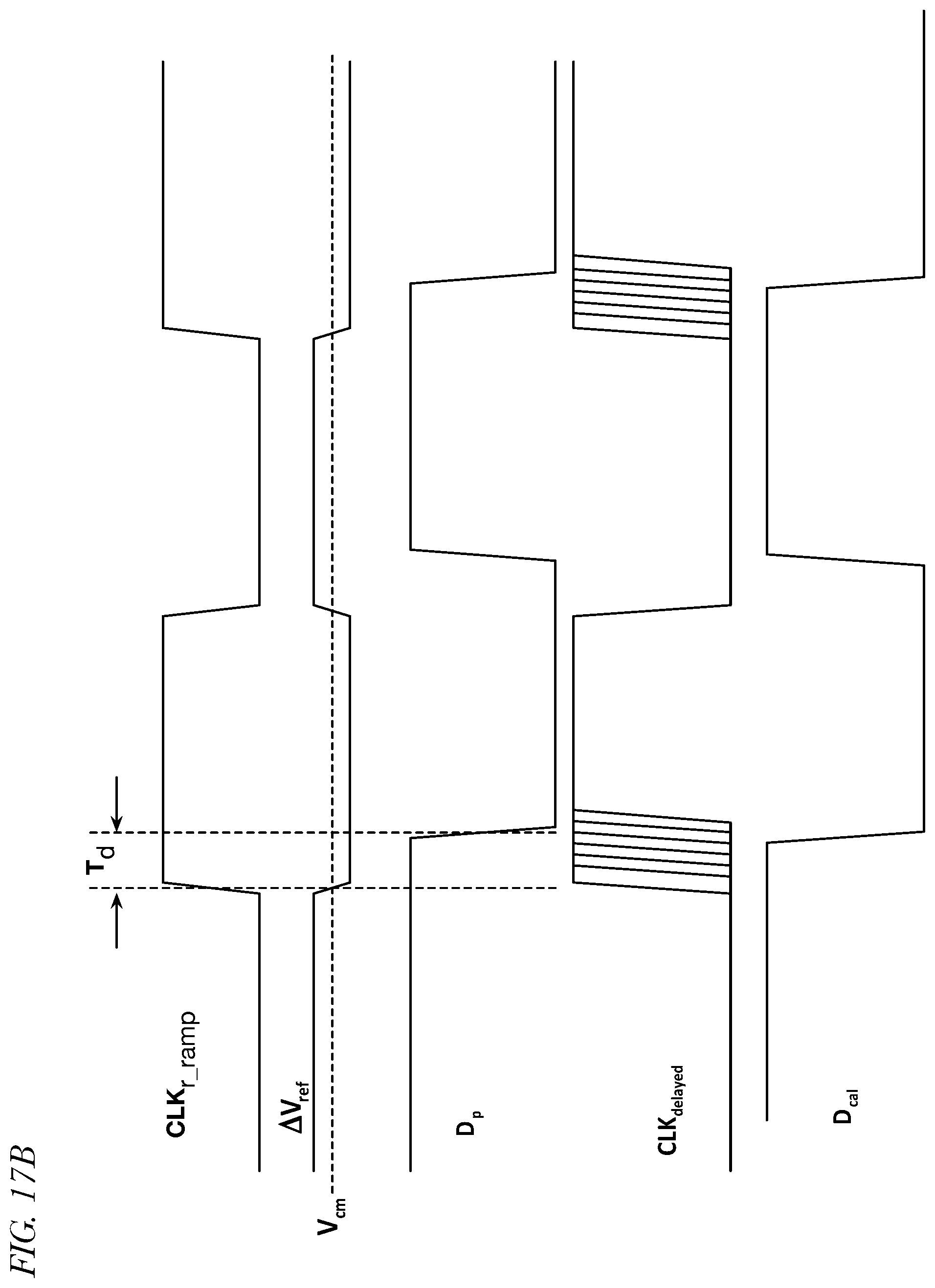
D00014
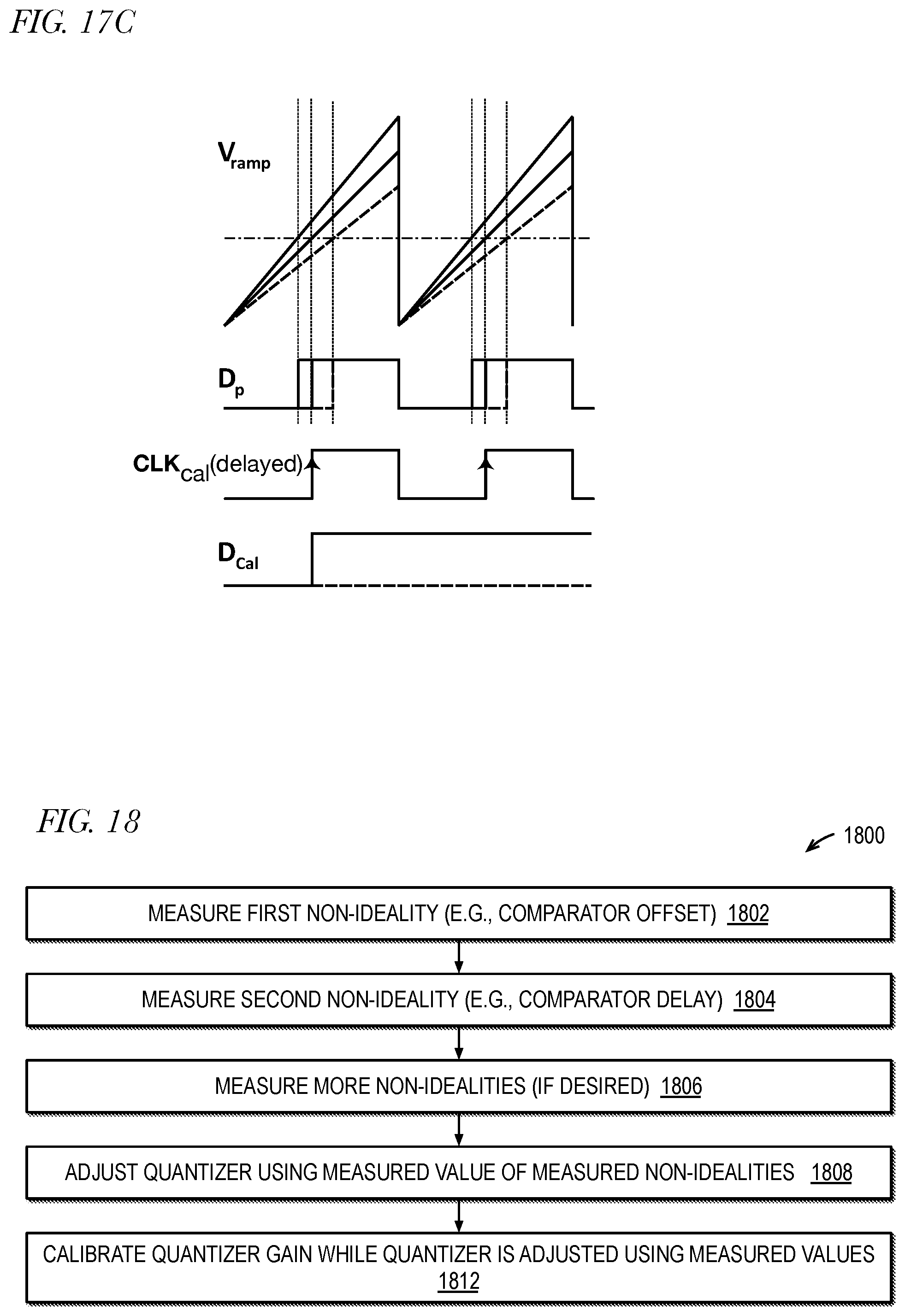




XML
uspto.report is an independent third-party trademark research tool that is not affiliated, endorsed, or sponsored by the United States Patent and Trademark Office (USPTO) or any other governmental organization. The information provided by uspto.report is based on publicly available data at the time of writing and is intended for informational purposes only.
While we strive to provide accurate and up-to-date information, we do not guarantee the accuracy, completeness, reliability, or suitability of the information displayed on this site. The use of this site is at your own risk. Any reliance you place on such information is therefore strictly at your own risk.
All official trademark data, including owner information, should be verified by visiting the official USPTO website at www.uspto.gov. This site is not intended to replace professional legal advice and should not be used as a substitute for consulting with a legal professional who is knowledgeable about trademark law.